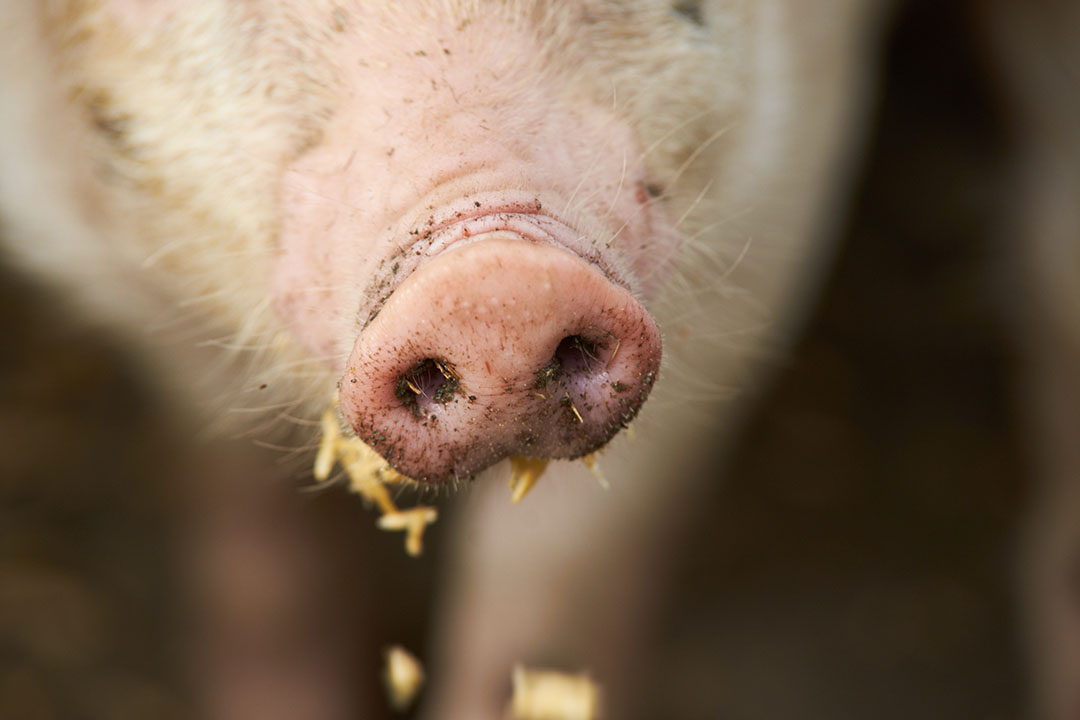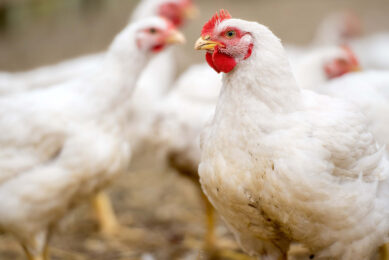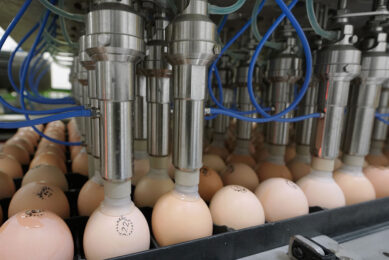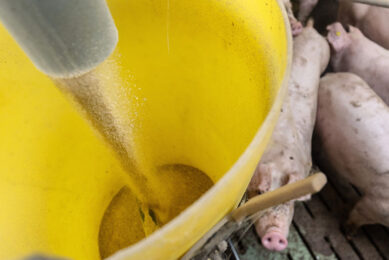Sensory science in animal nutrition

The sense of smell and taste are important topics and are used in animal nutrition to stimulate feed uptake in young animals for example. A group of experts delved deeper into this topic at a symposium, organised by Kaesler Nutrition.
Sight, hearing, smelling, feeling and tasting. These are all senses that we – humans – and animals use to survive and to function. For eating, the sense of taste is very important as a bad or bitter taste is a warning that something is wrong with the feed/food. Most of the taste is done at the first entry point of the feed, the mouth. A human has around 5,000 taste buds, a pig even more (19,904). A cow’s tongue is the winner with around 20,000 taste buds. Taste is stimulated in farm animals, and is done on a regular basis in pigs, animals that are sensitive to how the feed tastes. Positive taste stimulation in pigs is especially important when appetite is suppressed, such as at weaning, disease state or after relocation and social mixing. Feed palatability could increase voluntary feed intake and therefore improve performance parameters, particularly in young animals (piglets and calves).
Flavours in focus at conference
The art of taste and smell and the application in farm animals was further discussed at the Kaesler Nutrition Forum, held between May 8-9 in Cuxhaven, Germany. More than 150 scientists and industry representatives joined the meeting. At this high level conference, scientific knowledge was shared on how sensory additives react in the brain and how taste and smell work, the so-called olfactory system. Kaesler has a range of feed additives in its portfolio, among which are flavours. Flavours for use in animal diets are often extracted from plants or fruits. It can also entail the use of sweet components such as stevia. “Under our brand name cuxArom we develop flavours that improve the sensory characteristics of the feed via active smell and flavour components. This in turn promotes feed intake,” explained Dr Bruno Kaesler, managing director. “With this forum we want to show our clients and customers that flavours are much more than just adding smell and taste. There is a whole science behind it.”
Sensory marketing
Not all the attendees noted it straight away, but the conference room was equipped with a small scent machine, releasing a subtle citrus fragrance. “Scented environments are an essential component of multi-sensory marketing,” explained Volkmar Heitmann from the company Duftleben. He spoke about the scents and sense of smell from a historical, psychological and physiological point of view. “Essential oils can for example activate pheromone receptors and citrus flavours are known to reduce stress. Signature scents are used in shops for example, as they can modify the customer experience as well as a customer’s purchasing habits, but there is also potential to use them more often on farms. This can have beneficial effects on both the farmer and the animals,” explained Mr Heitmann.

Amino acid effects on appetite
All animals have a sense of smell. They use it to recognise the smell of food but also use it to communicate, interact and navigate amongst others. The sense of smell is a complex system, including physiological and biochemical actors. Dr Anna Wessels from The Free University Berlin, Germany, talked about the use of amino acids as flavouring agents and their ability to regulate feed intake and satiety. Most animal nutritionists probably never realised that amino acids, besides the nutritional properties, also have other effects. “Amino acids contribute to the regulation of digestion and appetite via hormones, neurons and neurotransmitters,” Dr Wessels explained. This is a complex system, but in short it means that amino acids for example can stimulate the secretion of gut hormones. Some of these hormones have a feed intake stimulating effect (orexigenic) or a feed intake inhibiting effect (anorectic). “An excess of the amino acid leucine for example can lead to a anorectic effect and can reduce the availability of valine and isoleucine (needed for protein synthesis), as shown in experiments in piglets. A dietary amino acid imbalance should therefore be prevented,” Dr Wessels explained. But amino acids can also act as tastants. Dr Wessels: “Especially pigs are sensitive to taste sensation and show clear preferences for umami tastants as L-Glutamine, L-Glutamate and Monosodium Glutamate and L-Lysine HCL among the dispensable amino acids.”
Also read: Bitter tastants in feed ingredients
Plant extracts and gut health
Dr Dietmar Krautwurst, lecturer at the Leibnitz-Institute for Food Systems Biology, Prof Dr Rudolf Bauer holding the Chair of Pharmacognosy at the Karl Franzens University Graz and Prof Dr Michael Blaut from the German Institute of Human Nutrition dealt with the pharmacological function of phytogenic flavourings such as polyphenols. It became clear that flavourings and sweeteners should not only be discussed as olfactory topics. As, they are also suitable to have a positive effect on the immune defence – provided they have the corresponding bioavailability. Positive effects can also be seen, for example, in intestinal microbiota. Prof Blaut addressed the importance of a healthy microbiota. “Dysbiosis (imbalance of human gut microbial community) has implications in diseases, such as obesity in humans or gut inflammation in livestock animals. Plants are full of antioxidants and anti-inflammatory compounds and there is a interaction between plant constituents and the gut microbiota. Trials with willow bark extract in humans for example showed positive results,” Prof Blaut explained.
Perinatal conditioning
Dr David Solá-Oriol from the Universitat Autónoma de Barcelona focused on how nutrients and preference for smell and taste can be transferred from the sow to the piglet, both in the gestation stage as the post-gestation phase. “Some flavours intrinsically related with the common feed ingredients are known to be transferred in small amounts from the maternal diet to the amniotic fluid and milk, promoting mother rewarding effects on the newborn and weaned pig, a phenomenon known as a prenatal or perinatal conditioning. It has been reported that perinatal conditioning is determinant to reduce the stress and improve the feed intake in weanling pigs,” Dr Solá-Oriol explained. He further mentioned that some trials have been done to further test this. “In earlier trials, it was shown that the amniotic fluid of sows is sensitive to dietary anethol, eugenol and cinnamaldehyde inclusion. This knowledge can be a useful strategy to manipulate piglet feeding behaviour before and after weaning due to the positive maternal reward.”
 Beheer
Beheer









 WP Admin
WP Admin  Bewerk bericht
Bewerk bericht